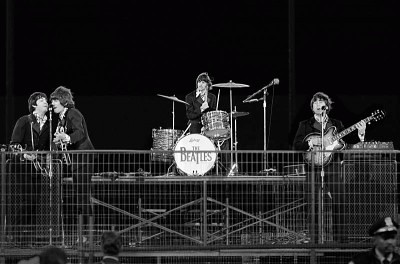A typhoon strikes China, killing at least 50,000 people.
Tag Archives: 29 August
29 August 1756
Frederick the Great attacks Saxony, beginning the Seven Years’ War in Europe.
29 August 1997
Netflix is launched as an internet DVD rental service.
29 August 1898
The Goodyear tire company is founded.
29 August 1842
Treaty of Nanking signing ends the First Opium War.
[rdp-wiki-embed url=’https://en.wikipedia.org/wiki/First_Opium_War’]
29 August 1484
Pope Innocent VIII succeeds Pope Sixtus IV.
Pope Innocent VIII Latin: Innocentius VIII; 1432 – 25 July 1492, born Giovanni Battista Cybo, was Pope from 29 August 1484 to his death in 1492. Born into a prominent Genoese family he entered the church and was made bishop in 1467 before being elevated to the rank of cardinal by Pope Sixtus IV. He was elected Pope in 1484, as a compromise candidate, after a stormy conclave. As pope, he personally endorsed and gave official Church approval to the Malleus Maleficarum, a controversial fifteenth-century guide to witch hunting.
Giovanni Battista Cybo was born in Genoa of Greek ancestry, the son of Arano Cybo or Cibo and his wife Teodorina de Mari, of an old Genoese family. Arano Cybo was viceroy of Naples and then a senator in Rome under Pope Calixtus III. Giovanni Battista’s early years were spent at the Neapolitan court. While in Naples he was appointed a Canon of the Cathedral of Capua, and was given the Priory of S. Maria d’Arba in Genoa.[6] After the death of King Alfonso, friction between Giovanni Battista and the Archbishop of Genoa decided him to resign his Canonry, and to go to Padua and then to Rome for his education.
n Rome he became a priest in the retinue of cardinal Calandrini, half-brother to Pope Nicholas V. In 1467, he was made Bishop of Savona by Pope Paul II, but exchanged this see in 1472 for that of Molfetta in south-eastern Italy. In 1473, with the support of Giuliano Della Rovere, later Pope Julius II, he was made cardinal by Pope Sixtus IV, whom he succeeded on 29 August 1484 as Pope Innocent VIII.
The papal conclave of 1484 was riven with faction, while gangs rioted in the streets. In order to prevent the election of the Venetian Cardinal Barbo, Camerlengo of the Sacred College of Cardinals, on the evening before the election, after the cardinals had retired for the night, the Dean of the College of Cardinals, Cardinal Giuliano della Rovere, nephew of the late Pope, and Cardinal Borgia, the Vice-Chancellor, visited a number of cardinals and secured their votes with the promise of various benefices.
Shortly after his coronation Innocent VIII addressed a fruitless summons to Christendom to unite in a crusade against the Turks. A protracted conflict with King Ferdinand I of Naples was the principal obstacle. Ferdinand’s oppressive government led in 1485 to a rebellion of the aristocracy, known as the Conspiracy of the Barons, which included Francesco Coppola and Antonello Sanseverino of Salerno and was supported by Pope Innocent VIII. Innocent excommunicated him in 1489 and invited King Charles VIII of France to come to Italy with an army and take possession of the Kingdom of Naples, a disastrous political event for the Italian peninsula as a whole. The immediate conflict was not ended until 1494, after Innocent VIII’s death.
29 August 1966
The Beatles perform their last concert at Candlestick Park in San Francisco.
Although they made an unannounced live appearance in January 1969 on the rooftop of the Apple building, The Beatles’ final live concert took place on 29 August 1966 at Candlestick Park in San Francisco, California.
The Park’s capacity was 42,500, but only 25,000 tickets were sold, leaving large sections of unsold seats. Fans paid between $4.50 and $6.50 for tickets, and The Beatles’ fee was around $90,000. The show’s promoter was local company Tempo Productions.
The Beatles took 65% of the gross, the city of San Francisco took 15% of paid admissions and were given 50 free tickets. This arrangement, coupled with low ticket sales and other unexpected expenses resulted in a financial loss for Tempo Productions.
Candlestick Park was the home of the baseball team the San Francisco Giants. The stage was located just behind second base on the field, and was five feet high and surrounded by a six-foot high wire fence.
The compère was ‘Emperor’ Gene Nelson of KYA 1260 AM, and the support acts were, in order of appearance, The Remains, Bobby Hebb, The Cyrkle and The Ronettes. The show began at 8pm.
The Beatles took to the stage at 9.27pm, and performed 11 songs: Rock And Roll Music, She’s A Woman, If I Needed Someone, Day Tripper, Baby’s In Black, I Feel Fine, Yesterday, I Wanna Be Your Man, Nowhere Man, Paperback Writer and Long Tall Sally.
The group knew it was to be their final concert. Recognising its significance, John Lennon and Paul McCartney took a camera onto the stage, with which they took pictures of the crowd, the rest of the group, and themselves at arm’s length.
29 August 1930
The remaining 36 inhabitants of the isolated archipelago, St Kilda, are voluntarily evacuated to other parts of Scotland.
On 29 August 1930, a ship called Harebell took the entire remaining population of 36 inhabitants to Morvern on the Scottish mainland, a decision they took collectively themselves. The evacuation of St Kilda came about for many reasons. The islands’ inhabitants had existed for centuries in relative isolation until tourism and the presence of the military during the First World War led the islanders to seek alternatives to privations they routinely suffered. The changes made to the island by visitors in the 19th century disconnected the islanders from the way of life that had allowed their forebears to survive in this unique environment.
29 August 1898
The Goodyear tire company is founded.
29 August 2004
Michael Schumacher wins his 5th consecutive Formula One Drivers’ championship.



